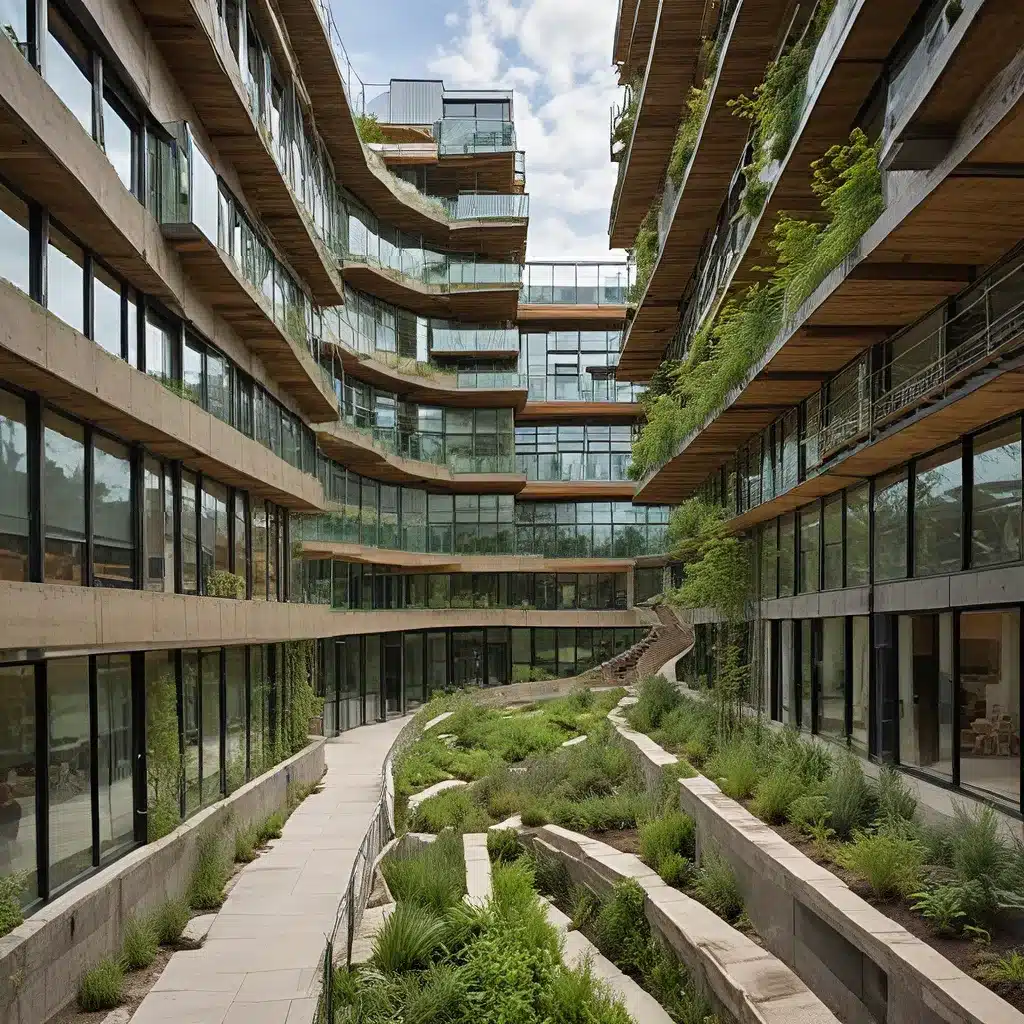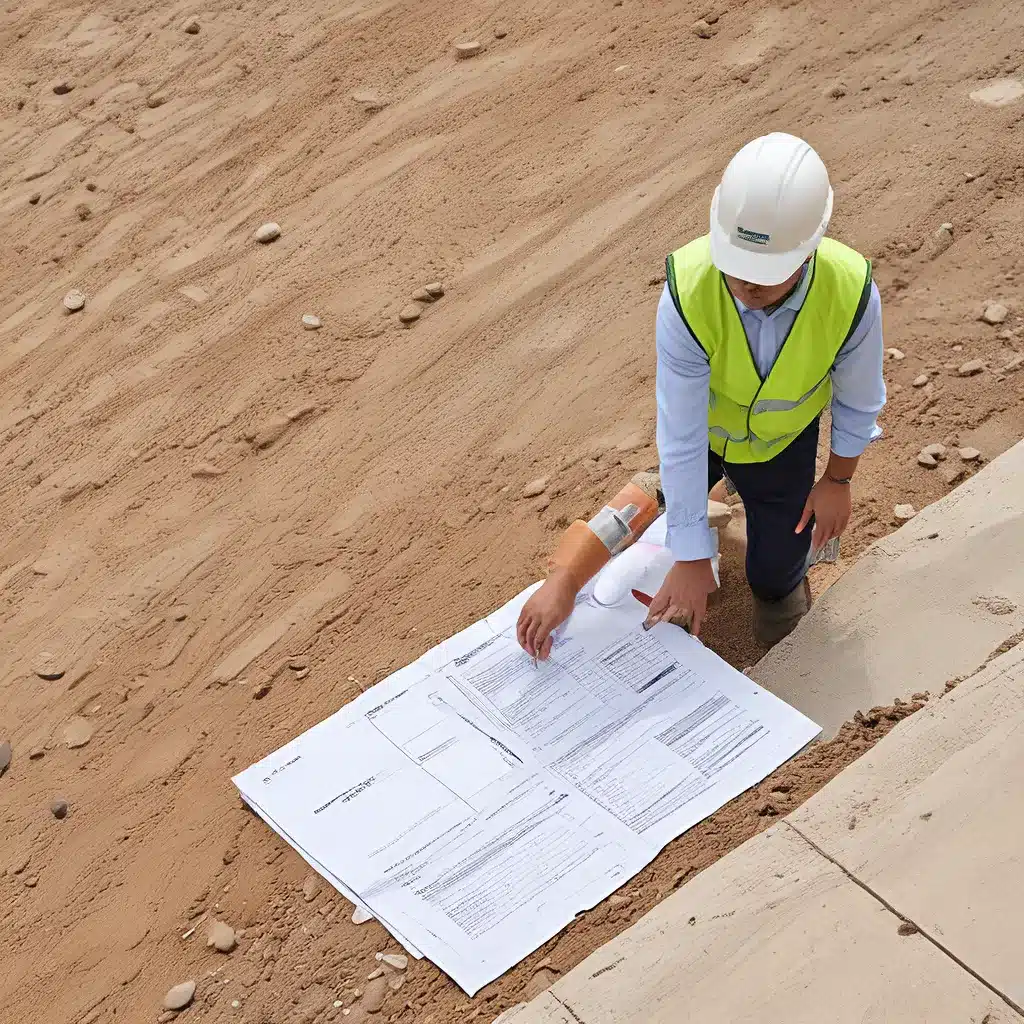
As a seasoned general contractor, I’ve seen the construction industry evolve in fascinating ways over the years. One of the most exciting transformations has been the rise of green building – a movement that’s not only transforming the way we construct our built environment, but also pushing the boundaries of what’s possible.
In this in-depth article, I’ll take you on a journey through the frontiers of green building, exploring the latest innovations and best practices that are shaping the future of sustainable construction. Buckle up, because this is going to be an eye-opening ride!
Embracing the Smart City Revolution
One of the most captivating trends in the world of green building is the integration of smart city technologies. Imagine a future where our homes, workplaces, and public spaces are seamlessly connected, optimizing energy efficiency, resource management, and even our overall well-being.
The Frontiers Research Topic on Advancements in Sustainable Urban Development delves into this fascinating realm, exploring how data analytics, virtual modeling, and digital tools are revolutionizing the way we plan and construct our urban environments.
As I’ve seen firsthand, smart city initiatives are enabling builders and developers to make more informed decisions, minimize waste, and create buildings that are not only energy-efficient but also responsive to the needs of their occupants. By harnessing the power of technology, we can design spaces that are truly sustainable, both in terms of their environmental impact and their ability to enhance the quality of life for the people who live and work within them.
Unlocking the Potential of Renewable Energy
Another exciting frontier in green building is the integration of renewable energy technologies. Gone are the days when solar panels and wind turbines were a novelty – today, they’re becoming an integral part of the construction process.
Recent research has highlighted the growing importance of renewable energy integration in sustainable urban development, with a focus on the practical challenges and opportunities that come with this transition.
As a general contractor, I’ve seen firsthand how the incorporation of renewable energy solutions can transform a building’s energy profile, reducing carbon footprints and utility costs while also enhancing its resilience in the face of grid disruptions. From rooftop solar arrays to geothermal heat pumps, the options for harnessing clean, renewable energy are more diverse and cost-effective than ever before.
Embracing Sustainable Materials and Construction Practices
Of course, green building is not just about the integration of high-tech solutions – it’s also about the materials and practices we use in the construction process itself. In this domain, the frontiers of innovation are pushing the boundaries of what’s possible.
As the Frontiers article on Advancements in Sustainable Urban Development highlights, the use of energy-efficient building materials, life cycle analysis, and sustainable practices are all critical components of the green building revolution.
From low-impact materials like recycled plastic and bamboo to innovative construction techniques like prefabrication and modular design, the options for building in an environmentally responsible way are vast and ever-expanding. As a general contractor, I’ve been thrilled to see how these advancements are not only reducing the environmental impact of construction but also improving the overall quality and durability of the buildings we create.
The Role of Digital Tools and Virtual Modeling
Underpinning many of these green building innovations are the advancements in digital tools and virtual modeling. As the Frontiers article notes, technologies like Building Information Modeling (BIM), virtual reality, and data analytics are empowering builders and designers to optimize their projects like never before.
By leveraging these digital tools, we can simulate and analyze the performance of our buildings before a single brick is laid. This allows us to identify and address potential issues early on, reducing waste, enhancing efficiency, and ensuring that the final product meets the highest standards of sustainability.
Furthermore, virtual modeling enables us to engage with our clients in new and innovative ways, allowing them to visualize the final product and provide valuable feedback throughout the design and construction process. This collaborative approach not only enhances the quality of the final product but also fosters a deeper sense of ownership and investment among all stakeholders.
The Importance of Life Cycle Analysis
One of the key principles driving the green building revolution is the concept of life cycle analysis. This holistic approach looks at the environmental impact of a building from start to finish – from the extraction and production of raw materials to the eventual demolition and disposal of the structure.
As the Frontiers article highlights, life cycle analysis is a critical tool for identifying opportunities to minimize a building’s carbon footprint and resource consumption throughout its entire lifespan. By considering factors like embodied energy, water usage, and waste management, we can make more informed decisions about the materials and construction practices we employ.
As a general contractor, I’ve seen firsthand how this approach has transformed the way we think about building design and construction. Rather than focusing solely on the upfront costs and immediate performance, we’re now considering the long-term sustainability of our projects – a shift that’s not only benefiting the environment but also creating more durable, cost-effective, and valuable structures for our clients.
The Human Element: Enhancing Occupant Well-being
While the technological and material advancements in green building are undoubtedly impressive, it’s important to remember that the ultimate goal of sustainable construction is to create spaces that enhance the well-being and quality of life for the people who occupy them.
As the Frontiers article explores, factors like indoor air quality, natural lighting, and biophilic design elements can have a profound impact on the physical and mental health of building occupants. By prioritizing these human-centric considerations, we can create spaces that not only reduce environmental impact but also support the overall well-being of the people who live and work within them.
As a general contractor, I’ve witnessed the transformative power of these design principles firsthand. From the awe-inspiring natural light that floods a well-designed office space to the soothing effects of biophilic elements like living walls and indoor gardens, the human benefits of green building are tangible and profound.
Overcoming Challenges and Embracing the Future
Of course, the journey towards a more sustainable built environment is not without its challenges. As exciting as the frontiers of green building may be, there are still significant hurdles to overcome – from the upfront costs of some sustainable technologies to the need for greater education and awareness among industry professionals and the general public.
But as I’ve seen time and time again, the construction industry is a resilient and innovative one. With a steadfast commitment to sustainability and a willingness to embrace new ideas, I’m confident that we can overcome these challenges and usher in a future where green building is the norm, not the exception.
So, whether you’re a seasoned general contractor like myself or a curious homeowner looking to learn more about sustainable construction, I encourage you to keep exploring the frontiers of green building. The possibilities are endless, and the rewards – for our planet, our communities, and our own well-being – are truly transformative.
And who knows, maybe the next great green building innovation will come from Reading General Contractor – a company that’s always on the cutting edge of sustainable construction. The future is ours to build, and it’s going to be a wild ride.
Related posts:
No related posts.




